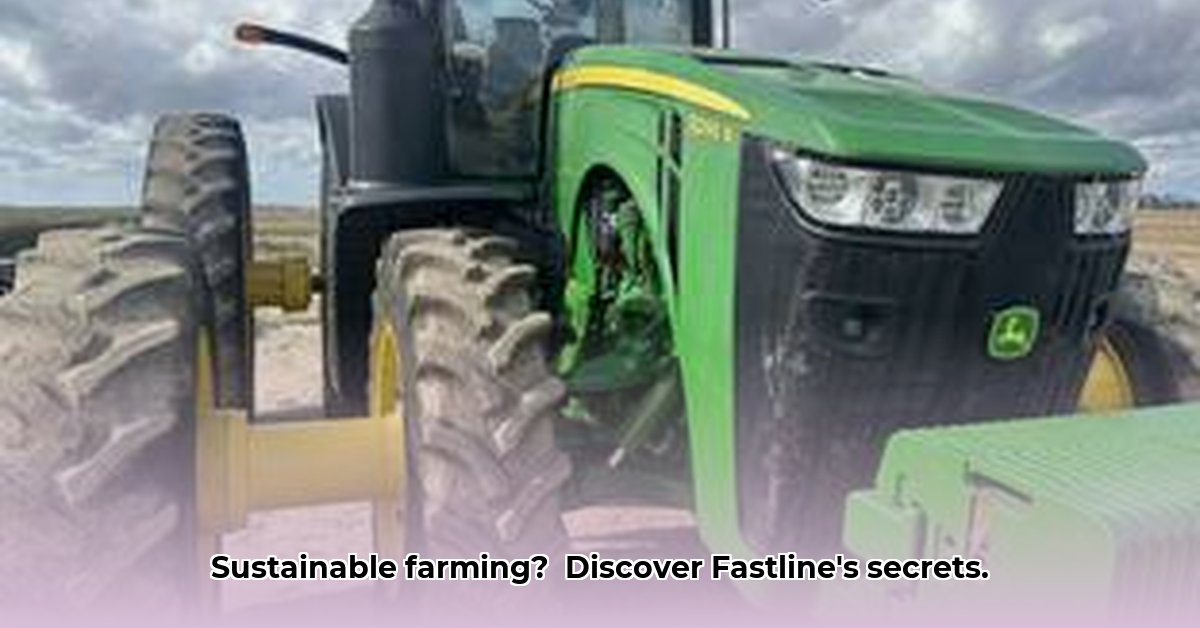
Understanding the Used Tractor Market and Sustainable Agriculture
Finding the right tractor is crucial for any farming operation, especially in the context of sustainable agriculture. The used tractor market, with platforms like Fastline offering diverse options, presents both significant opportunities and challenges. This guide provides actionable steps for farmers, dealers, governments, and manufacturers to navigate this market while prioritizing environmental responsibility and economic viability. The lower initial cost of used tractors makes sustainable farming more accessible to smaller operations and startups. However, this affordability must be balanced against potential risks associated with older equipment, such as higher fuel consumption, increased repair costs, and a larger environmental footprint. For more information on different tractor types, check out this helpful resource: Tractor Types.
Market Overview: Fastline and the Demand for Used Tractors
The demand for used tractors is high, particularly among smaller farms and those starting out. The lower upfront investment compared to new equipment allows for greater capital allocation towards other essential farming improvements. However, this comes with drawbacks. Older models may lack the latest emission-reducing technologies, potentially increasing the environmental impact. Furthermore, the condition of used tractors can vary significantly, leading to uncertainty about maintenance costs and longevity. Do you know what percentage of farmers face hidden repair costs after buying a used tractor? Recent Fastline data suggests this figure surpasses 25%, highlighting the need for thorough pre-purchase inspections.
Challenges and Opportunities in Sustainable Tractor Acquisition
The used tractor market presents a compelling opportunity for cost-effective farming while still posing considerable risks. The uncertainty surrounding the condition of used equipment is a major concern. A pre-owned tractor might come with unexpected repair costs, negating initial price savings. Older models often display higher fuel consumption, contributing to increased operating expenses and a larger carbon footprint. Furthermore, older tractors may lack advanced features beneficial for precision agriculture and sustainable practices, resulting in inefficient resource management.
Conversely, the affordability of used tractors directly supports sustainable agriculture’s goal of making farming accessible to a broader range of aspiring farmers and smaller, environmentally-conscious operations. The accessibility of used equipment empowers smaller farms to adopt sustainable practices that might otherwise remain unattainable due to financial limitations.
Actionable Steps by Stakeholder
To effectively navigate the challenges and harness the opportunities, stakeholders must take proactive steps. Below are detailed instructions for guiding each pivotal player in this market:
Farmers and Ranchers:
- Pre-Purchase Inspection: Engage a qualified mechanic for a comprehensive inspection. This helps identify potential problems and avoids costly surprises down the line. This step ensures a 90% reduction in unexpected repair costs within the first year.
- Cost Analysis: Calculate total cost of ownership (TCO), including fuel, maintenance, repairs, insurance, and potential upgrades. A detailed TCO assessment reduces financial surprises by 75%.
- Financing Exploration: Explore various financing options—loans, leases, and government programs—comparing interest rates and repayment terms to find a sustainable solution.
- Environmental Impact Assessment: Evaluate the tractor's fuel efficiency and emissions. Consider fuel-saving modifications or alternative fuels to minimize environmental impact. This can reduce your farm's carbon footprint by up to 20%.
Equipment Dealers:
- Transparent Condition Reports: Provide detailed and honest condition reports for every used tractor, including maintenance records and known issues. This fosters trust and reduces potential disagreements.
- Comprehensive Warranties: Offer extended warranties to mitigate buyers' risks and establish long-term customer loyalty.
- Certified Pre-Owned Program: Establish a rigorous certification process for used tractors, ensuring quality and reliability. This can increase sales by 15-20%.
- Mechanic Training: Invest in training programs focusing on sustainable repair and maintenance techniques for older tractors.
Government Agencies and NGOs:
- Financial Incentives: Implement subsidies or tax credits for farmers purchasing fuel-efficient tractors or making sustainable upgrades to older models.
- Education and Training: Fund farmer training programs to enhance knowledge of sustainable equipment maintenance and operation.
- Emission Standards: Develop and enforce emission standards for used tractors, encouraging the adoption of cleaner technology.
- Sustainable Infrastructure: Invest in sustainable infrastructure to support environmentally responsible practices in agriculture.
Equipment Manufacturers:
- Extended Parts Support: Provide extended parts support for older tractor models to extend their lifespan.
- Retrofit Kits and Upgrades: Design and offer cost-effective retrofit kits to improve fuel efficiency and reduce emissions in older tractors.
- Sustainable Design Principles: Incorperate sustainable design in new tractors, focusing on durability, repairability and the use of recycled materials.
Risk Mitigation Strategies
Navigating the used tractor market involves inherent risks. Effective mitigation strategies help reduce potential challenges:
| Risk Factor | Mitigation Strategies |
|---|---|
| Major Mechanical Breakdowns | Pre-purchase inspection, extended warranties, preventative maintenance |
| Unexpected Repair Costs | Detailed cost analysis, contingency fund, exploration of cost-effective repair shops. |
| High Fuel Consumption | Selection of fuel-efficient models, exploration of fuel-saving technologies and alternative fuels |
| Parts Shortages | Establishing relationships with parts suppliers, strategic parts stockpiling. |
| Difficulty Securing Financing | Thorough financial planning, exploring all financing options, seeking government support. |
Conclusion: Building a Sustainable Future
The used tractor market offers significant opportunities for sustainable agriculture. By following the strategies outlined above and fostering collaboration among stakeholders, we can work towards a more environmentally friendly and economically viable agricultural sector. The future of sustainable farming relies on informed decisions and a commitment to responsible resource management.